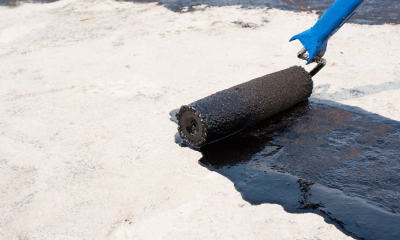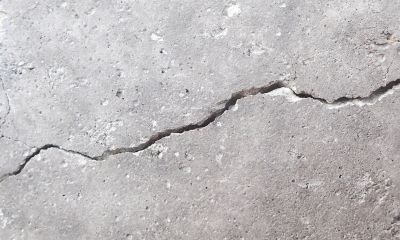A comprehensive FAQ guide to basement waterproofing systems
Moist, dank basements are common – in fact, water damage is the number one cause of structure deterioration. Furthermore, when the contents of below-ground space are valuable or rely on a dry atmosphere to function, basement waterproofing systems must be explored before water seepage becomes a real problem. In this comprehensive guide, we cover the top frequently asked questions around basement waterproofing systems, along with a detailed account of the best product for waterproofing basement walls. We hope you find this guide useful, and if you’ve any questions left unanswered – please do not hesitate to reach out to our expert team today.
What are basement waterproofing systems?
Basement waterproofing systems is the general term that structural experts use to describe techniques of keeping basements, cellars, and other below-ground rooms dry.
These techniques are:
- Barrier waterproofing systems;
- Integral waterproofing systems;
- Drained waterproofing systems – such as a Type C cavity drain system, which diverts water seepage to a pump or other safe drainage spot.
For a further explanation of the basement waterproofing types – Type A, B, and C – please continue reading to the next section.
The main goal of basement waterproofing systems is written in the name – it is to ensure basements are proofed from damage-inducing water seepage which may occur after (for example, heavy rainfall, excess humidity causing trapped moisture between walls, burst pipes, or a plumbing leak). There are a few reasons as to why buildings are subjected to basement waterproofing – ranging from repairing a flooded basement and preventing it from happening again, to the property owner deciding to convert the basement into additional living or working space (known as dry space). Thus, multi-skilled basement waterproofing is an effective repair and restoration technique along with a sound preventative measure, mainly because we know that water naturally pools below ground level.
It is worth noting that basement waterproofing is often mistaken for `basement tanking (a Type A system)`, which involves applying a specialist water resilient coating to make the room watertight. Though, basement waterproofing and basement tanking products can be applied to the same job if there is a need for both. If you feel your industrial basement may need both systems, kindly get in touch with our experts for further advice here.
Type A, Type B, and Type C: Waterproofing types explained
Generally, waterproofing your basement walls from the inside is the most effective approach, though specialists may have varying opinions on exact methods. All three waterproofing `types` can be applied to the internal walls of a building. These types are:
Type A: includes barrier systems (water resilient coatings) used on internal walls, external walls, or as a sandwiched approach. This is the category into which basement tanking falls.
Type B: includes structurally integral systems – which uses composite-reinforced concrete with integrated details (such as water bars). Type B waterproofing is defined by the British Standards Institute (BSI) code of practice BS8102:2009.
Type C: includes drained or drainage systems that work to collect water seepage in a designated `safe area` or redirect water away from the property. This is the category of which drained waterproofing systems fall into, another common technique.
What are the benefits of basement waterproofing systems?
There are many known benefits to basement waterproofing. These benefits include, but are not exhausted to:
- Enhances the structural integrity of a basement or cellar;
- Protects the area from structural damage;
- Prevents water from penetrating through the walls, causing mold growth;
- Strengthens the structure’s vital foundations;
- Shields the basement’s contents, equipment, or other stored items from irreversible damage;
- Increases the value of the building and decreases insurance costs;
- Creates a healthy working environment (in the case of a basement conversion).
What’s more, basement waterproofing often costs far less than repairs, in the event of water seepage getting in and destroying your contents or jeopardising the structural integrity of your building. And so, if you think your basement poses a water seepage risk, it could save you a considerable amount of money by putting preventative measures in place.
Basement waterproofing systems can be applied to both domestic and commercial properties; at CCUK, our structural experts specialise in the waterproofing of industrial or commercial structures, including factories, tower blocks, power stations, sewage works, and more. If you would like a FREE site visit and quote, please get in touch with our experts here today.
What is the best product for waterproofing basement walls?
The best product for waterproofing basement walls entirely depends on which type of waterproofing you go ahead with – Type A, Type B, Type C, or a combination (please refer to the previous section on types explained). While structural experts specialising in basement waterproofing will have their own opinions on what’s best – depending on their experience, personal preferences, etc. – here is a list of our favourite products categorised by type:
Type A waterproofing: For Type A, which is water-resilient coatings such as tanking slurry and water seal, our chosen products are: Flexcrete 851, Sika-1 and Nufins Prime Flex 920 and 910.
Type B waterproofing: For Type B, which is hydrophilic water bars and metal water bars, our chosen products are: any suitable coatings from Sika, Weber, BASF, FOSROC etc. (unless specified by engineers).
Type C waterproofing: For Type C, which is drained and drainage systems such as mini pumping stations, sump pumps, and French drains. Our chosen products are: Flexcrete 851 and Sika-1.
How much does basement waterproofing cost per linear foot?
Basement waterproofing cost per linear foot depends on the type of waterproofing that you opt for – a decision usually based upon a recommendation by a structural strengthening & repairs expert. At CCUK, we feel it best to visit the site to conduct a thorough analysis before providing you with a quote. This is not only to ensure an accurate quote, but that basement waterproofing is the correct application for your building or structure.
To book your FREE site visit & quote (which we call our cost analysis and feasibility survey), please get in touch with our experts today. If you’re not ready to book a site visit and you’ve still got a tonne more questions, you can book a `Coffee & Catch-up` with us!




